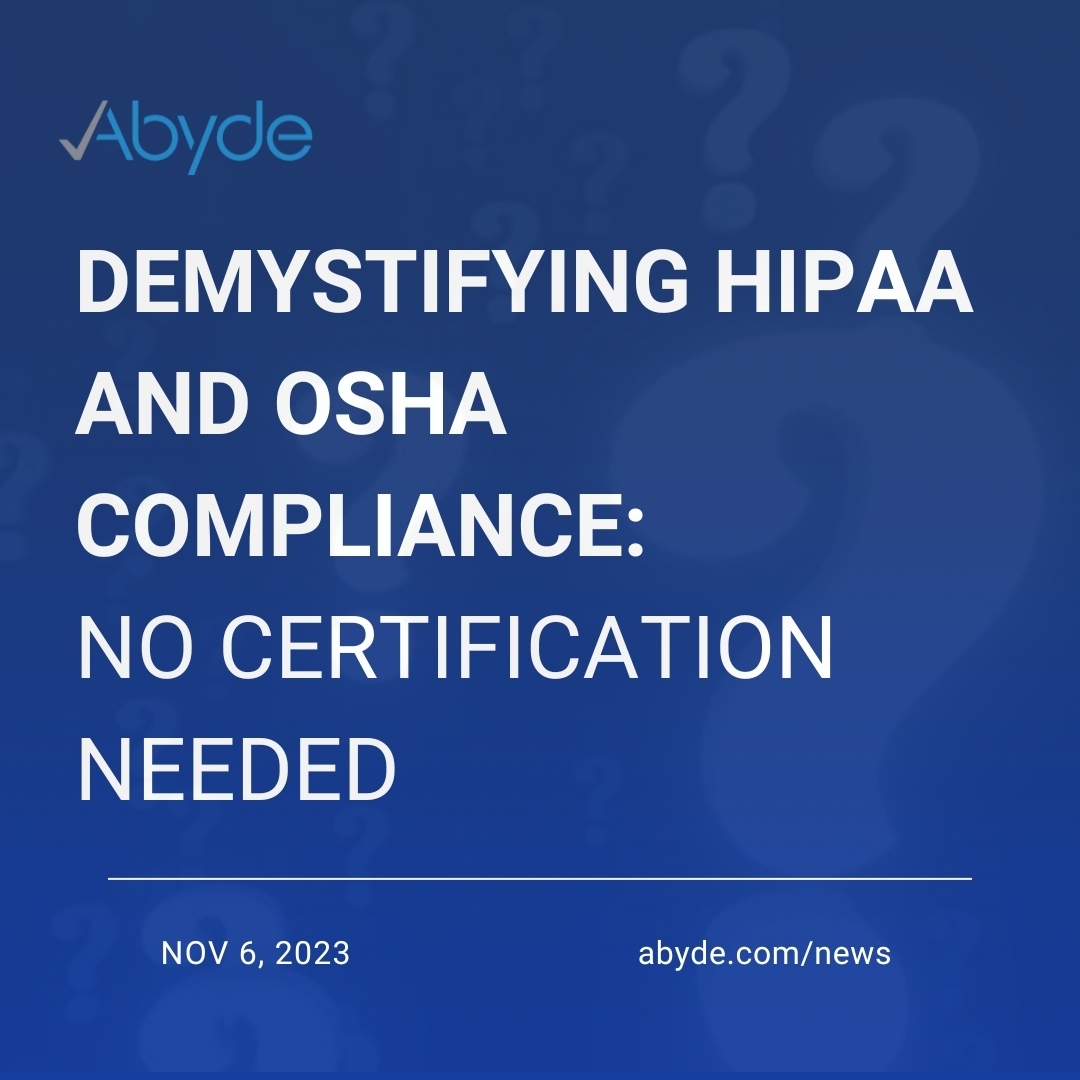
In the healthcare and workplace safety realms, two acronyms often cause confusion: HIPAA and OSHA. HIPAA (Health Insurance Portability and Accountability Act) protects patient information, while OSHA (Occupational Safety and Health Administration) ensures workplace safety. The misconception is that you can achieve HIPAA or OSHA certification. But the truth is, there’s no such thing as HIPAA or OSHA certification. In this blog post, we’ll clear up this misunderstanding, expose deceptive tactics, and outline the real steps for compliance.
The Myth of HIPAA and OSHA Certification
Many believe that they can become “certified” in HIPAA or OSHA compliance. However, neither the government nor any recognized authority offers official certification for HIPAA or OSHA. Legitimate certification by a governing body doesn’t exist.
The same goes for OSHA. OSHA provides guidelines, regulations, and recommendations for workplace safety, but it doesn’t grant certification to individuals or businesses. Official OSHA certification is not a part of the compliance process.
Deceptive Marketing Tactics
The absence of official HIPAA and OSHA certification processes has led to deceptive practices. Some companies claim to provide HIPAA or OSHA certification programs, charging clients for services that are essentially training and consulting. While valuable, these services don’t offer genuine certification.
Moreover, some companies use misleading terms like “HIPAA Certified” or “OSHA Certified” to suggest approval by a governing body. These tactics mislead businesses and healthcare providers into investing in services that lack real certification.
The True Path to Compliance
Rather than pursuing HIPAA or OSHA certification, organizations should aim for compliance with the respective regulations. Compliance involves steps such as risk assessments, documented policies and procedures, training, and essential documentation. Let’s explore these steps for each regulation.
HIPAA Compliance
- Risk Assessment: Identify vulnerabilities and threats to patient health information through a risk assessment and address them to protect patient data.
- Documented Policies and Procedures: Create and maintain policies and procedures specific to your practice, covering data security, employee training, and breach response protocols.
- Employee Training: Train your staff on HIPAA requirements and your organization’s policies. Document training sessions to demonstrate compliance.
- Logs: Keep records of HIPAA-related activities, including breach incident reports, patient authorizations, and business associate agreements.
- Regular Audits and Monitoring: Continuously monitor and audit your compliance efforts to identify and rectify non-compliance issues.
During an audit by the Office for Civil Rights (OCR), responsible for HIPAA enforcement, your documented policies and procedures play a crucial role in demonstrating compliance.
OSHA Compliance
- Workplace Hazard Assessment: Identify and assess potential workplace hazards, including physical, chemical, biological, and ergonomic risks.
- Policies and Procedures: Develop written safety policies and procedures tailored to your workplace’s specific hazards and risks.
- Employee Training: Train employees in safety protocols, hazard identification, and mitigation, and provide necessary personal protective equipment (PPE).
- Recordkeeping: Maintain records of workplace injuries, illnesses, and OSHA-related incidents as required by OSHA standards.
- Regular Inspections: Routinely inspect the workplace to ensure compliance with OSHA standards and promptly address non-compliance issues.
In an OSHA inspection, documented policies, training records, and proper recordkeeping demonstrate your commitment to safety.
In conclusion, it’s vital to dispel the myth of HIPAA and OSHA certification. Official certification for HIPAA or OSHA doesn’t exist. Instead, organizations and individuals should focus on achieving compliance by following the specific steps outlined in the regulations. Compliance entails risk assessments, documented policies and procedures, training, and maintaining necessary documentation. This is the true path to ensuring patient data privacy and workplace safety, and it’s what businesses and healthcare providers should prioritize. Don’t be misled by deceptive marketing tactics; prioritize genuine compliance.
If you are interested in speaking with a compliance expert to cross check your current compliance program Abyde would be happy to help. Please click here to schedule a one on one consultation with someone from our team.